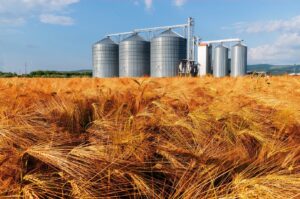Read the latest information on
Foot-and-mouth disease

Winter is the perfect time for growers to get ahead of potential grain storage issues before the harvest season starts. With pests less active, it is an ideal time to deep-clean silos, handle essential maintenance, and apply protective treatments, which are all crucial steps to keep your storage in top shape.
A proactive approach to grain storage hygiene leads to better quality grain, higher returns, and a more efficient harvest season. It is the ideal time to take advantage of the cooler months to clean, maintain, prepare, and set up grain storage facilities for a successful harvest.
The best time for silo cleaning
Timing is key when it comes to effective grain storage hygiene. It is best to clean grain handling equipment and silos immediately after use, before any pests can establish themselves. However, if a full clean was not completed post-harvest, winter is the next best option. Grains Research Development Corporation (GRDC) Storage Extension Officer, Alex Conway, notes that during the cooler months, insect breeding and migration are significantly reduced, making it easier to manage infestations.
Undertaking a site-wide clean-up in winter ensures silos are ready and pest-free for the next grain harvest.
Effective grain hygiene practices
Good grain storage hygiene practices include completely removing grain waste from silos, equipment, and other storage. Even a small amount of residual grain can sustain pests and lead to infestations.
The goal of grain hygiene is to eliminate any environment where pests can live and breed. To effectively remove grain residues, consider using a combination of these cleaning methods:
Using a broom or compressed air helps eliminate most grain residues, while a follow-up wash-down will remove remaining dust and debris from cracks and hard-to-reach areas. If you need to wash, choose a day with low humidity and good ventilation to ensure quick, thorough drying, which will help prevent rust.
Structural maintenance and treatments
While cleaning, take time to inspect the structure of storage facilities. Identify and seal any cracks or crevices where grain can lodge and pests can hide. Remove leftover grain bags and spills, as these create an ideal breeding ground for storage pests.
After cleaning, structural treatments can be applied to prevent pest infestations. Diatomaceous earth (DE) products are a popular non-chemical option that can provide up to 12 months of protection when applied correctly in dry conditions. Before using any chemical treatments, check with grain buyers for maximum residue level (MRL) allowances to ensure you meet grain delivery standards.
Don’t forget grain handling equipment
Cleaning and treating augers, conveyors, and other grain handling equipment is just as important as maintaining silos. Pests can hide and thrive in these areas, potentially contaminating fresh grain. Regular inspection and maintenance of handling equipment will help prevent infestations and keep things moving smoothly.
Ongoing monitoring is key
The work does not stop after a thorough clean and treatment. Ongoing monitoring of stored grain is essential. Growers should check silos and grain storage areas every two weeks, especially in warmer months when pests are more active. Use grain insect sieves and traps to monitor for grain storage pests. Keep a record of any insects you find, even if that number is zero. Early detection of insect activity allows identification and timely intervention, reducing the risk of grain spoilage and financial losses.
The Monitoring Stored Grain on Farm Booklet is a great resource for identifying grain storage pests.
“Diatomaceous earth works by breaking down an insect’s cuticle (its protective exterior), causing them to dehydrate and die.” – Alex Conway, Grains Research Development Corporation (GRDC)
Launched in 2007, the Grains Farm Biosecurity Program (GFBP) is managed by Plant Health Australia (PHA) and funded by growers through Grain Producers Australia (GPA). The GFBP is an initiative to improve the management of, and preparedness for, biosecurity risks in the grains industry at the farm and industry levels.
For more information and helpful grain resources, visit the GFBP website and the Stored Grain Information Hub.